Going back in time to mid October, pre-appendicitis, and a day trip to the Mekong River south-west of Ho Chi Minh City.

We're leaving the city and heading into the countryside. Roads are smaller, there is less traffic and there's a sense of village life. Here's the local knife sharpener, for example, on the side of the road.
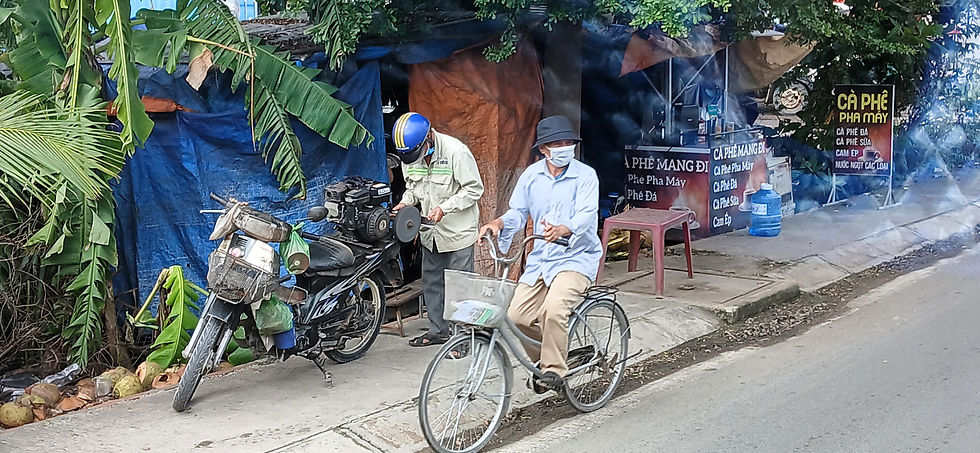
Vinh Tràng Temple is a Buddhist temple, built around 1850. It's very picturesque, with lovely gardens and bonsai trees. But it's best known for the huge statue of Budai, or the Laughing Buddha.
The Laughing Buddha — Budai — is not actually the Buddha. He was a disciple of Buddha. The real Budai was a Chinese monk in the 10th century, named for the cloth sack that he always carried. Budai is an eccentric character, always laughing or smiling, and always fat. He symbolises abundance and forgiveness.
There is a general sense of abundance at this temple. The gardens are well tended, varied and lush. It's a humid area, unsurprising as we're so close to the river.
Eminent monks are honoured with statues, each one individual and distinctive. For random appeal, I have included the rubbish bin disguised as a tree stump.
My knowledge of Buddhism and Buddhist statues is fairly minimal, but I have learned enough to know that statues of Buddha (Gautama Buddha, the Buddha) are usually shown in one of three positions.
The standing Buddha is shown with both feet on the ground. He is engaged with the world. His hand gestures represent specific qualities, such as fearlessness or compassion. If his hands are active, this is sometimes called the walking Buddha. This stance represents strength, power and readiness to guide and protect.
The sitting Buddha is shown in lotus or cross-legged positions. His eyes are closed and he is meditating or contemplating. This stance symbolises inner peace, mindfulness and the attainment of enlightenment.
The reclining Buddha (like the one below) lies on his right side, with the head resting on his right hand. He has a slight smile. He is shown often during his final moments before enlightenment (which I think is death). It symbolises the Buddha's transcendence of suffering and the impermanence of life.
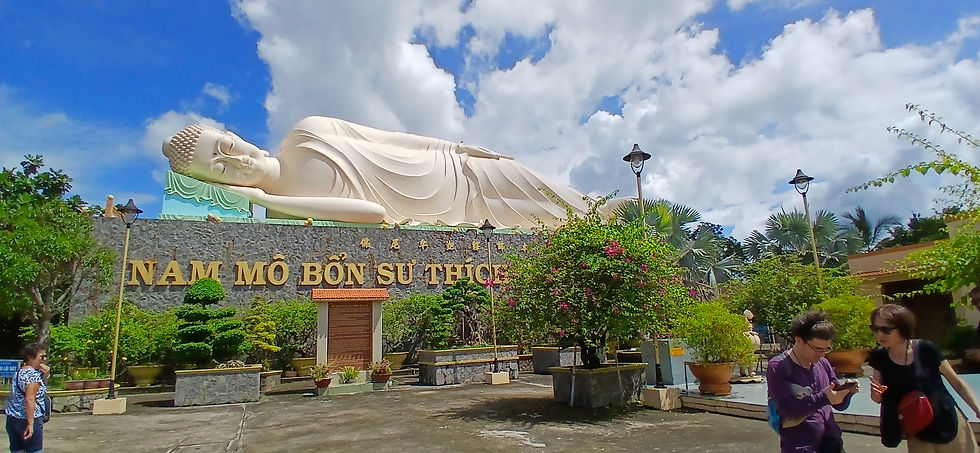
I have a lot to learn about Buddhist iconography, but I do know that the Lady Buddha — like the Laughing Buddha — isn't really the Buddha either. Lady Buddha is the Goddess of Mercy who sees, hears and sympathises with people's cries. She holds a vase full of the nectar of life and a willow branch, that she uses to sprinkles nectar on the prayers of people.
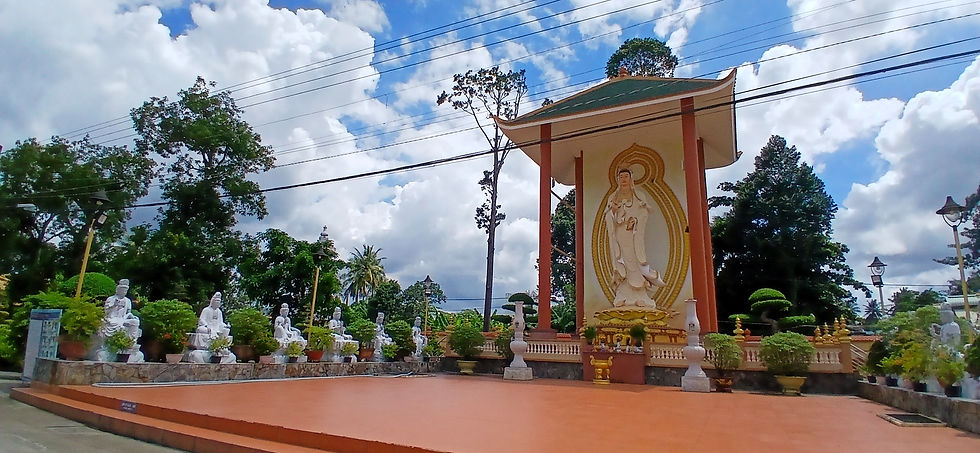
Inside the temple are a plethora of statues and artworks, including a goddess with many hands (a bit like the Hindu Durga) and one of an itinerant monk who looked remarkably like a Franciscan. Now I really am getting my religious iconography confused. The temple is still a working temple. The resident monks (of both genders) continue their daily lives and veneration amidst the tourists who visit the temple. Our guide (Handsome Ben — more on him later) told us that many foreigners also join the temple for a period, in their quest for enlightenment, transcendance or whatever it is that pilgrims seek. I say that sincerely.
I thought that the courtyard was truly lovely. This opens out of the dining room, directly where the monks were sitting for their meal. In the absence of gawking tourists, this must be a sublime space.
Our guide introduced himself to us in the morning by telling us that since he was plain, slightly overweight and had dark skin, he called himself Handsome Ben. Very endearing. We were all requested to leave a good review for 'Handsome Ben'.
But away from the temple, away! We head down to the Mekong River and to some of the islands and canals in this area.
The Mekong River rises in Tibet, flows through south-west China, Myanmar, Laos, Thailand, Cambodia and southern Vietnam. It's the third longest river in Asia and has the greatest biodiversity after the Amazon — including the biggest river fish in the world. Sadly, many of the rare species (such as the Irrawaddy dolphin) are in decline as a result of overfishing, dams and flood control. And some of the troubles are historical. In some areas of the Mekong, unexploded ordnance from the Indochina and American wars still poses a threat for fishermen and bridge builders.
Our first stop is on Turtle Island, for some kumquat tea and a tasting of its famous honey from the longan flowers. The bees are stingless bees, although don't tell that to a member of our party who managed to get stung. You can also have your photo taken with the resident pythons, but I'm ophidiophobic (aka not fond of snakes) so it was all I could do to take these photos.
From Turtle Island to Unicorn Island, where we transferred via golf buggy ...
... to a local canal where the local boatpeople rowed us through the undergrowth. Be warned: you're expected to tip your boatperson at the end of the journey, so have some notes at hand. I wouldn't say you'd be thrown overboard otherwise, but there will be scowls all round.
From the canal to a fruit garden for rambutan, mangosteen, guava, mangoes and dragon fruit — accompanied by traditional folk music. I've tried to identify the unfamiliar musical instruments and I think the musicians are playing a moon-shaped lute and a two-chord fiddle. And a guitar, of course.
The Vietnamese monochord (dan bau) traditionally has four parts: a bamboo tube, a wooden rod, a half coconut shell and a silk string, but today electronic components are used to amplify the sound. It's central to Vietnamese folk music and is, dare I say it, an acquired taste.
Our lunch consisted of river fish, deep fried. The flesh is plucked from the fish and used to fill rice paper rolls.
We also had the chance to try rat. (I did.) It's not one of those urban black rats that eats rubbish — these are bush rats that live among the rice paddies. They eat rice only. So something more like a small possum or rabbit than a rat, really. It tasted a bit like, well, rabbit.
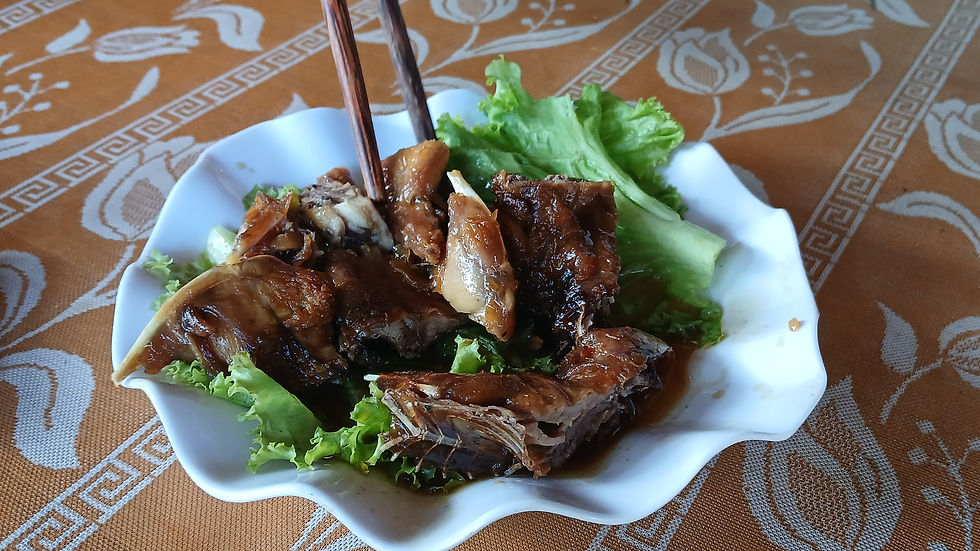
And then off for a post-lunch bike ride around the restaurant, on very dodgy bikes. A terrible bike limits one's range, whatever one's intention. It's very unlikely that you'll get lost if you can barely stay upright. Fortunately the local dogs seemed pretty blasé about all our comings and goings.
Our last stop on this stretch of the Mekong River was Phoenix Island. Coconuts litter the landscape and we visit a traditional coconut candy making business. We're shown how to judge the best, freshest coconut to buy at the market, how to split open a coconut using a viciously sharp spear impaler thing, how to toss coconuts into a machine to chop them up, and then finally how the absolutely delicious creamy coconut candy is made. That's not sugar or glucose that's added ... that's maltose. Rice malt. Rice syrup.
I chose pandan-flavoured coconut candy.

The final adventure of the day was to taste happy water. This is the famous 40% proof rice wine, in which a range of health-giving objects are steeped. These might include frogs, lizards, herbs, roots ... and snakes. Apart from the regular smaller creatures, the well matured jar of happy water that we were invited to taste contained three snakes: a cobra, a smaller snake that the cobra is 'eating' (a sign of power), and the black and white striped snake called the 7-minute snake. You're dead 7 minutes after it bites you.
When in Rome ... Yes, I was the only one of our family group to taste this stuff. No, I don't believe it had anything to do with acute appendicitis three weeks later. It's just raw spirit, with fresh notes of frog, a hint of scaly snake on the middle palate, and a finish of lingering lizard.
We were all coached in the traditional Vietnamese toasts. Serious concentration!
Back to Ho Chi Minh City, high tea at the Park Hyatt (smoked eel macarons! crab choux buns! scallops! and a few sweet things) ...
... and a stroll through the evening streets past an open-air fashion show. And maybe just one more egg coffee (although Hanoi does them better).
Vietnam has a lot to offer the tourist. If it's not on your bucket list, it should be.



















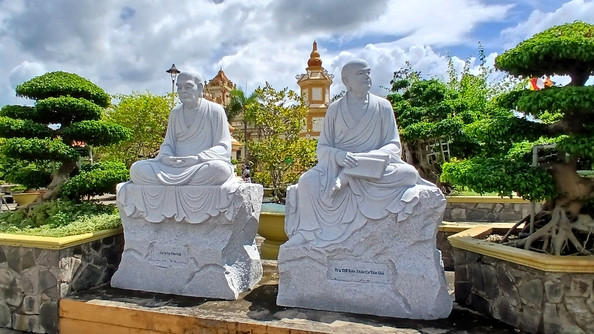















































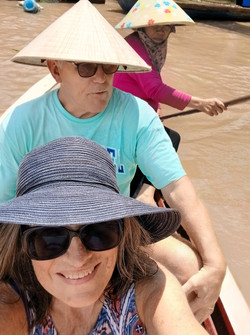





















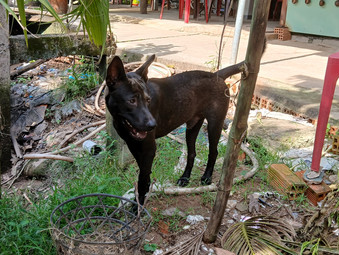






























































コメント